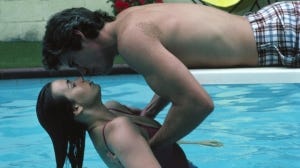Breathless ’83 | Horny on Main
Breening Breathless
During my research for this volume on the pre-Code era of Hollywood Cinema, I came across a blog called ‘The Pure Entertainment Preservation Society’ (PEPS) with the tagline: ‘Save the Arts in America!’. Their mission is simple: bring back the Production Code and restore the morals of society. The bl…
Keep reading with a 7-day free trial
Subscribe to Cinema Year Zero to keep reading this post and get 7 days of free access to the full post archives.





